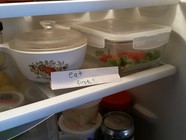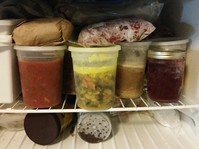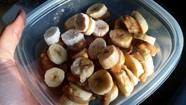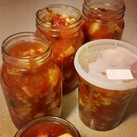February workshop: Food waste reduction

Learn more about how food is wasted and what we can do about it. We will cover the basics on when and why food is wasted at home as well as practical tips to start today.
- Tuesday, February 16 from 6 to 7 p.m.
- Friday, February 19 from noon to 1 p.m.
Please RSVP on the Facebook events for February 16 or February 19 or by emailing your liaison. You can find the full schedule of workshops on our participant webpage.
|
The second round of waste measurement is in progress and goes through February 13. Please continue to track your waste using the same method as the first time (by weighing, journaling, or taking pictures). Enter your data through the Zero Waste Challenge reporting form, which is also linked on the participant webpage. Contact your liaison with questions.

Freezing is a simple and quick way to extend the life of your food and reduce packaging waste. You don’t need any special equipment, just some airtight containers and a freezer with a little space in it.
You can rescue leftovers, save your extra fruits and vegetables, or take a more active approach by meal prepping or buying food specifically to preserve. However you use it, the freezer is your friend!
|
Top tips for success
- Always freeze in portions you will want later - you don’t want to fight a frozen chunk with a knife!
- Remember that frozen liquids expand, so leave an inch of space at the top of your container.
- Take a second to label and date each package, you'll thank yourself later!
Fresh fruits, vegetables, and herbs
Fruits and vegetables are great candidates for freezing!

Remove the core or pit from fruits, chop them into pieces, and freeze in a labeled bag, glass, or plastic container (reuse or recycle freezer bags!).
Alternatively, spread pieces or whole berries on a cookie sheet and place in the freezer until frozen, then remove them and place into a container for longer-term storage. This way they don’t stick together. Use frozen fruit in smoothies, baked goods, sauces, on yogurt, or in jams.
Vegetables require slightly more effort as most types should be blanched (or quickly boiled and cooled) before freezing. This will preserve their texture and color. Depending on the veggie, you can heat and eat or cook it longer.
To save herbs, freeze them in olive oil in ice cube trays. Pop them out to use in soups, sauces, or pesto.
|
Cooked or prepared foods

You can make your own frozen meals or side dishes to replace the store-bought versions. Many prepared foods freeze quite well.
Cook up a batch of beans, soups, or veggie dishes, place into ready-to-eat portions, and save yourself from takeout the next time you need a quick meal. Treat yourself with frozen cookies, pizza, and breakfast foods such as pancakes and waffles. If you want to avoid using plastic, see this article for tips on freezing food in glass.
|

You can also freeze most dairy products like cheese, yogurt, milk, or butter to use for baking. Using ice cube trays is a good way to freeze liquids like milk or heavy cream. Once you have frozen milk or cream cubes, move them to a different container for storing until you're ready to use them.
Go beyond the basics
You can freeze many foods that may not immediately come to mind. Consider freezing:
|
- Eggs: raw or cooked, great for when a recipe only calls for whites or yolks
- Avocados: when they all ripen at once, freeze to use for guacamole or smoothies
- Fresh ginger or turmeric root: grate or peel a bunch and freeze in slices to save time later
- Onions: chop up a bagful to get your prep done for weeks
- Grapes and blueberries: these are great frozen snacks
- Tomato paste: you hardly ever need a full can for a recipe, so freeze in tablespoon dollops for easy use
- Extra coffee: freeze in an ice cube tray to add to cold coffee, coffee drinks or a smoothie
The ultimate pause button
Your freezer is a great last-minute tool to prevent wasted food. Don’t want to eat that last serving of soup after you had a batch that lasted all week? Freeze it for later. Have half container of strawberries that are starting to overripen but you’re leaving for a trip? Freeze them, too. If you don’t have the time to eat up or do extra prep to a food item, “freeze time” and get back to it later.
For more information on freezing, Cook Smarts has a guide to get you started. Check out the kitchen section of the zero waste guide for more information on proper food storage and reducing wasted food.
|